10 ERP Integrations Every Manufacturer Needs
As manufacturing markets grow more competitive, the need to operate lean and eliminate inefficiencies has become more important than ever. In the past having a quality ERP system was enough to get the job done. Today the best ERP systems incorporate all the new Internet of Things (IoT) technologies currently being developed.
They integrate with these technologies to enable your operation to cut costs, work more efficiently, and simplify your entire manufacturing process in ways that were previously only dreams. The ability to integrate with third-party IoT technologies has already become one of the most important criteria for selecting an ERP system -- and a powerful competitive advantage.
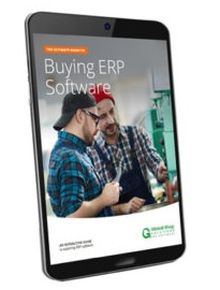
In an era when the Internet of Things (IoT) is king, having the right applications and software to integrate with your ERP software is essential to success.
Global Shop Solutions' list of the 10 integrations every manufacturer needs with their ERP includes some that are new and some that have been around awhile.
Nesting Interface
Operating lean requires reducing setup time and labor as well as material waste.
Nesting software handles all three by efficiently arranging part shapes on sheets or plates of stock material to produce the least amount of waste. It eliminates the time required to manually plan which parts to cut on a piece of metal, plastic, wood, etc. and reduces purchasing costs by minimizing unusable leftover materials.

Nesting software helps produce the least amount of waste.
A nesting interface enables your ERP system to share information with the nesting software, including work orders, inventory information, workcenter details, and other data. The nesting software uses this data to optimize material usage and sends cutlist details, material drops, scrap, and estimates for routing and work orders back to the ERP system.
RFID
Whether they're using barcodes, badges, or biometric scanners, employees typically have multiple processes for entering the building, unlocking doors, and logging into your ERP system.
Radio frequency identification (RFID) lets you consolidate all access procedures into your ERP system to eliminate multiple badges, barcoded employee lists, and human error. In the process, RFID provides faster and more efficient log-ins, more accurate data, lower technology costs, and stronger security of your building and your data. It also facilitates more accurate payroll processing and tracking of job costs.
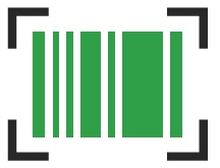
RFID consolidates all all access procedures into your ERP system.
As more manufacturers embrace this technology, RFID can also be used to trace inventory, improve scheduling by tracking idle equipment, locate lost or misplaced tools and equipment, monitor waste and shrinkage, and more. Some manufacturers are even using this technology to track material moving from an outside storehouse into the warehouse and through production on the shop floor.
EDI
In the manufacturing world, small process improvements performed hundreds of times a day can add up to big savings.
Electronic data interchange (EDI) software saves time and money (for you and your customers) by facilitating the computer-to-computer exchange of business data across different platforms. This data can include purchase orders, invoices, inventory levels, shipping notices, and much more.
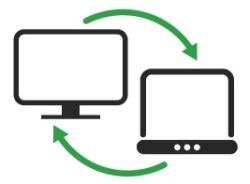
EDI software saves time and money by facilitating computer to computer business data.
Using EDI to seamlessly integrate with your customers' business systems speeds up the order entry process by allowing them to send order data electronically. No phone calls. No faxes. No manual data entry. Just fast, accurate electronic data transmission that eliminates the need for a second entry on the other side of every transaction.
eCommerce/Web
When it comes to saving time and simplifying processes, eCommerce is like EDI on steroids.
Imagine if customers could place an order on your website, and your ERP system would automatically launch the sales and work order processes to get the job rolling. Then it would also automatically send an invoice or process payment with a credit card. How much time and effort would that remove from your order entry process?
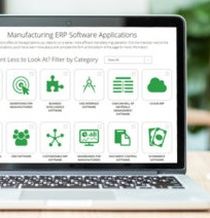
E-Commerce is like EDI on steroids.
All it requires is three basic elements:
- A SOAP (Simple Object Access Protocol) software program so that your website can communicate with your ERP system.
- An experienced website vendor to build your eCommerce portal.
- An ERP vendor willing to support the integration between their product and the eCommerce platform.
CAD Interface
Do your engineers still spend hours every week writing lengthy BOMs and comparing them against the BOMs in your ERP system?
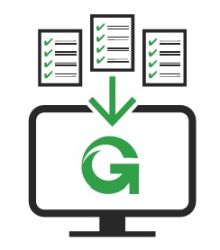
Eliminate wasteful manual entries by seamlessly importing the BOM into your ERP system.
A CAD Interface solution can eliminate this wasteful manual entry by seamlessly importing the BOM into your ERP system. Your engineers can then use the imported BOM to ensure sufficient materials are on hand to complete the job on time and on budget. With a CAD interface you can:
- Reduce engineering time and costs.
- Eliminate manual data entry to update BOMs, and the human error that goes along with it.
- Ensure everyone on the shop floor has the latest document rev.
- Create jobs faster.
Tool Cribs and Vending Machines
To improve the accuracy of tooling costs, more manufacturers are employing tool vending machines.
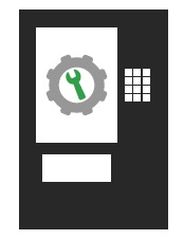
The vending machine dispenses the tool and automatically applies the cost of the tool to the job.
Workers scan their badge and job number into the machine and press a button for the tool they need. The vending machine dispenses the tool and automatically applies the cost of the tool to the job, thereby increasing accuracy for the overall job costing process.
The key with this integration is seamlessly transporting the costing data to your ERP system.
Employee Efficiency
You can't afford to have employees standing around wondering what to do next. Integrating Internet-capable TV screens and displays with your ERP system can significantly reduce employee red time.
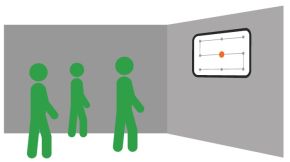
Integrating internet-capable TV screens with your ERP system can significantly reduce employee red time.
These screens, strategically placed around the shop floor, can display a variety of real-time data pulled from your ERP system. This includes the status of work orders in progress, work orders scheduled to begin, and hot jobs that need immediate attention.
In addition to keeping employees on the job, this integration eliminates the need for reams of paper work orders and shop floor schedules. It also prevents confusion on the shop floor because employees can always see what needs to be worked on and when -- without having to leave their machines or workcenters.
Payroll
Accounting & payroll are complex, time-consuming processes.
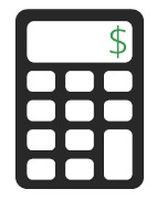
Easily distribute payroll accounting by department.
Managing all the data in one system makes the entire process quicker and easier while reducing administrative costs. Integrating your payroll system into your general ledger and shop floor data allows you to:
- Eliminate redundant data entry.
- Easily distribute payroll accounting by department.
- Simplify tax reporting.
- Manage your employees better than ever.
- Complete end-of-month closing in less time.
Taxes
Making efficient use of sales tax data has also taken a big step forward by integrating with ERP software.
Manufacturers can now link sales tax data directly from their ERP software to their state sales and property tax software programs. They can also simplify other tax-related tasks, such as R&D tax credit tracking.
Business Services
Tracking employee expenses -- meals, gas, tools, etc. -- on installations, repairs and other service calls has long been a thorn in the side of financial personnel.

Using a smartphone app, you can tie expenses directly into a work order.
Even with today's sophisticated software programs, expenses can still get lost. Or they don't get applied to the job until the employee returns to the office. Either way, it interferes with your ability to track job costs in real time.
Now you can enjoy cost, compliance, and visibility by integrating expense-reporting software with your ERP system.
As IoT transforms the manufacturing industry at breakneck speed, success increasingly depends on your ability to connect with real-time data from anywhere at any time.
Want more information? Click below.
Rate this article
View our terms of use and privacy policy ::m::